#anatomy diagram
Text

crushes thks thing in my fist
#asylum scrabbles#anatomy#human anatomy#anatomy diagram#diagram#heart#human heart#heart diagram#educational ? i suppose. hm.#this wasnt even for anything i just felt like it
106 notes
·
View notes
Photo
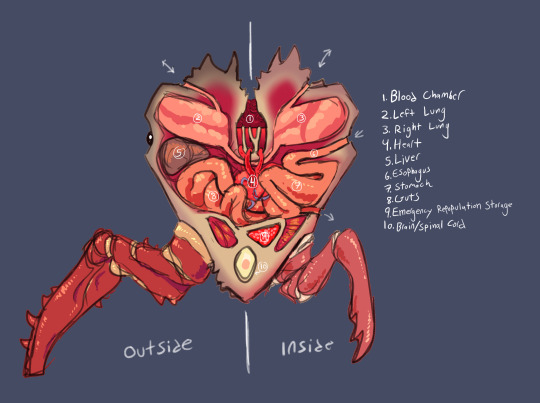
Abattoir Anatomy. In depth explanation below. Excuse my penmanship.
1. Blood Chamber- The blood used to maintain the dome of the Abattoir.
2. Left Lung- Lung which takes in air directly from the outside and pumps it outside.
3. Right Lung- Pumps air into the Abattoir’s interior or takes air from inside.
Note: Lungs cycle air in and out of the interior to keep it fresh, but the air flow cycle can be sealed for a time should the need arise.
4. Heart- Exactly what you think it is.
5. Liver- See above
6. Esophagus- For lack of a mouth there is a lot of fleshy growths in here which press and pass food down to the stomach. They are fed a diet of entrails and sewage.
7.Stomach- Big vat of acid and stones.
8. Guts- Intestines and fun stuff.
9. Emergency Repopulation Storage- Not actually a part of the Abattoir’s themselves, this is instead housing people chosen and stripped down to the essentials in case the current Abattoir’s population is lost. You only end up here if you’ve upset the higher ups as it is a fate worse than death.
10. Brain/Spinal cord- Think of the entirety of their body being one big looping spine! The spinal cord runs through the length of the body as a big sheet lining the inside of the brain/spine cavity. The brain has been modified to a thin cord within the spine, swimming in cerebral spinal fluid who’s chemistry can be modified as needed. The Abattoir’s themselves originally posses the same faculties as a regular human, but all have suffered a level of cognitive decline by virtue of their living situation.
These organs are repeated every segment, but 1,4, and 10 are the only parts connected between segments.
Also the legs on their outside wall are made to support their weight and move, while the inner legs are strictly for digging/balance. And as well, eyes are only on the outside cause the people in these don’t know that they’re alive rip.
#the abattoirs#literally#gore#organs#blood#anatomy diagram#fun stuff with these guys#fantasy#worldbuilding
127 notes
·
View notes
Text
Free to use for whatever you want Flatlander basic anatomy design! It's public domain because I made it and I said so!
Web archive link for these two, plus my pencil drawings that I'll finish tomorrow. Also includes the one short story I wrote so far.
(Edit since I forgot to make it clear: You are 100% encouraged to download, share/repost these images, including the pencil drawings you can find at the link, as long as you link back to the web archive link so people can download the originals, include an image description for accessibility, and don't claim you made them!)
Please consider donating to the Web Archive if you've got any spare change!
You can buy the first design from my Threadless store :) I'll make more versions of it tomorrow.
Anyways I decided Flatlanders are monoecious like snails.
(Let me know if you would like this tagged as anything specific for filtering purposes! You can send anonymous asks to @neopronouns-in-action)
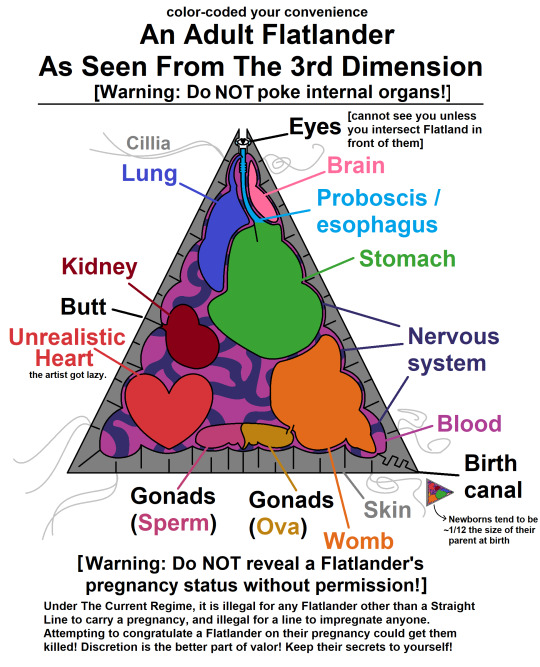


[ID: Three images.
The first is a flat color digital drawing entitled, "Color-coded your convenience, An Adult Flatlander As Seen From the 3rd Dimension. [Warning: Do not poke internal organs!]
Below the title is a drawing of an upward pointing triangle with color-coded internal organs each with a label of the corresponding color, connected with a line.
In clockwise direction, they are:
"Eyes: [Cannot see you unless you intersect Flatland in front of them]". The eyes are very small andinside a short opening at the tip of the triangle.
"Brain" - A small pink blob along the right inside of the Flatlander, curving.
"Proboscis / esophagus" - A light blue tube reaching from the eye and down to the:
"Stomach" - a large green sack.
"Nervous system" - Dark blue squiggly tubes branching across and around all the other organs in a random pattern.
"Blood" - The purple-red color filling in the background behind all the organs rather than being in veins.
"Birth canal" - An interlocking section in the outer wall of the
Flatlander's skin, currently closed.
Next to the birth canal is a tiny version of the larger triangle that is rotated 90 degrees, labeled "Newborns tend to be one-twelfth the size of their parent at birth".
"Skin" - the dark grey outer layer that separates the Flatlander's insides from the outside world. It is intersperced with short black lines.
"Womb" an orange sack in the bottom right corner of the Flatlander's insides.
"Gonads: Sperm / Ova" - Two connected small sacs marked dark pink and gold on the triangle's flat side.
Below the Flatlander is black text that reads:
"[Warning: Do not reveal a Flatlander's pregnancy status without permission!]
Under The Current Regime, it is illegal for any Flatlander other than a Straight Line to carry a pregnancy, and illegal for a line to impregnate anyone. Attempting to congratulate a Flatlander on their pregnancy could get them killed! Discretion is the better part of valor! Keep their secrets to yourself!"
Continuing along clockwise:
"Unrealistic heart (the artist got lazy)." - a red heart-shape in the bottom left corner of the triangle.
"Butt" - a short black line on the outer skin, connecting to the:
"Kidney" - a dark red shape like a bean.
"Lung" - a long, royal blue sack near the top of the triangle, next to the esophagus.
"Cilia" - two thin, grey tendrils emerging from near all points of the triangle.
The next image is a divider with black text below a black line, reading, "A Flatlander as seen from the 3rd dimension (true to color)"
The last image is the same triangle Flatlander seen in the first diagram, now with the labels and text removed, with all of the internal organs in different shades of pink and purple.
End ID.]
#long post#described images#pregnancy#anatomy#anatomy diagram#fake anatomy#ask to tag#Flatlander anatomy#Flatland#Rjalker reads Flatland a Romance of Many Dimensions#Flatland biology#Flatlander biology#IDK#Threadless merch#Flatland merch#Flatlanders#Rjalker does art#Anatomy of an Equal Sided Triangle#Flatlandanatomyposters2023#Flatlandanatomyposters
23 notes
·
View notes
Note
He's looking inwards
Zubin Sedghi is staring Inwards

4 notes
·
View notes
Text

Portrait of a child with Buruli ulcer by @claire_carswell
This is caused by an infection with mycobacterium ulcerans.
Buruli ulcer often starts as a painless swelling (nodule), a large painless area of induration (plaque) or a diffuse painless swelling of the legs, arms or face (oedema). The disease may progress with no pain and fever. Without treatment or sometimes during antibiotics treatment, the nodule, plaque or oedema will ulcerate within 4 weeks. Bone is occasionally affected, causing deformities.
This neglected tropical disease has been reported in 33 countries but transmission (and prevention) is poorly understood, and it is a very under-researched disease
#medicine#anatomy#human anatomy#medical illustration#medical humanities#science#medical diagram#anatomy illustration#anatomical illustration#scientific illustration#medical history#human biology#biology#anatomical diagram#medical art#pathology#anatomy diagram#neglected tropical diseases#bacterial infection#infection
145 notes
·
View notes
Text
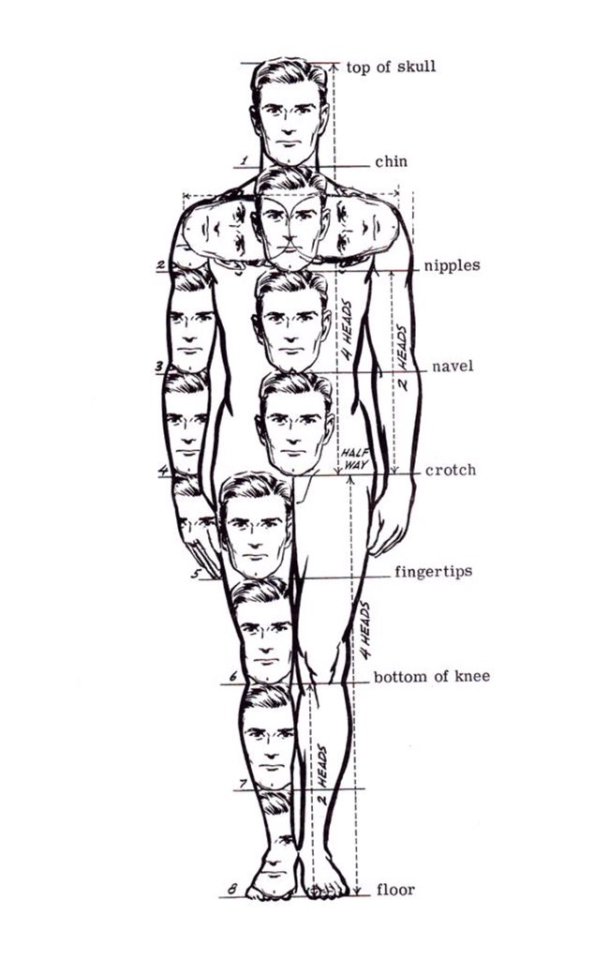
I will pay a KING'S RANSOM for a spandex morphsuit made to *exactly* match this image:
Bob Dobbs heads up one leg and one arm, other side dotted arrows and "4 HEADS"/"2 HEADS"/"HALF WAY" etc, and a convergence of Dobbs heads at my shoulders/neck.
↓ make-up tips below the fold ↓

BLLLLLAAAAGGGGGHHHHHH!
images from Jack Hamm's Drawing the Head and Figure
ooh, his and hers couple costume:

18 notes
·
View notes
Text

Nervous system. Modern Biology. 1947.
Internet Archive
1K notes
·
View notes
Text

Eugène-Louis Doyen | Coupe de tronçonnage du poignet, passant par la première rangée des os du carpe | XIX.C.
#eugène-louis doyen#anatomy#vintage illustration#illustration#hands#monochrome#medical#19th century#diagram#u
348 notes
·
View notes
Text

His motto
Image reference:
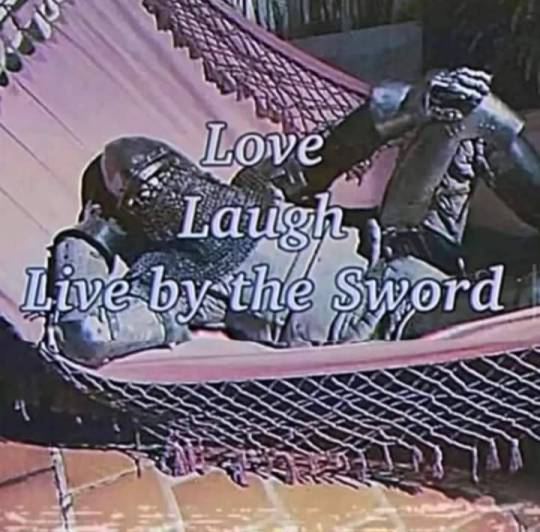
#throws some food for the zoro simps#i spent so long trying to perfect the anatomy i was studying muscle diagrams and shit#if you have any tips they would be appreciated#ill probably post the non-text version another day#one piece#roronoa zoro#opfanart#my art#homegrown worms
190 notes
·
View notes
Text
Some of my old anatomy class notes from wizard school

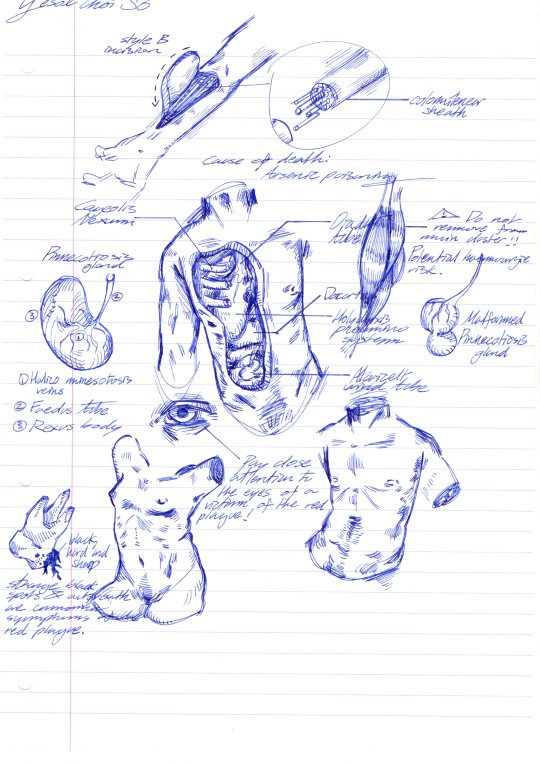



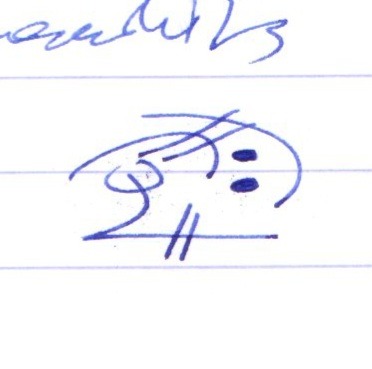
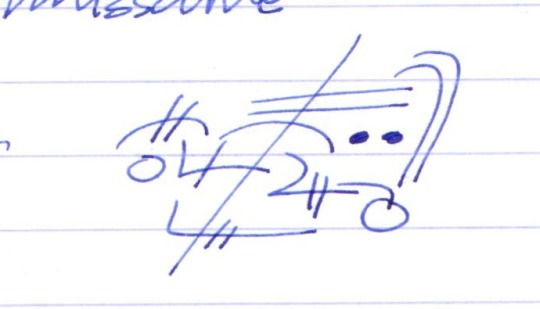


(I tried to make them look as realistically school notes-y as possible, I even busted out my red pen to write fake corrections from the teacher)
#drawing with fountain pen is insane btw- i feel like viktor frankenstein poshly writing down notes and drawing diagrams#my art#anatomy#nudity#tw gore#tw body horror#tw unreality#very inaccurate anatomy i know
81 notes
·
View notes
Photo
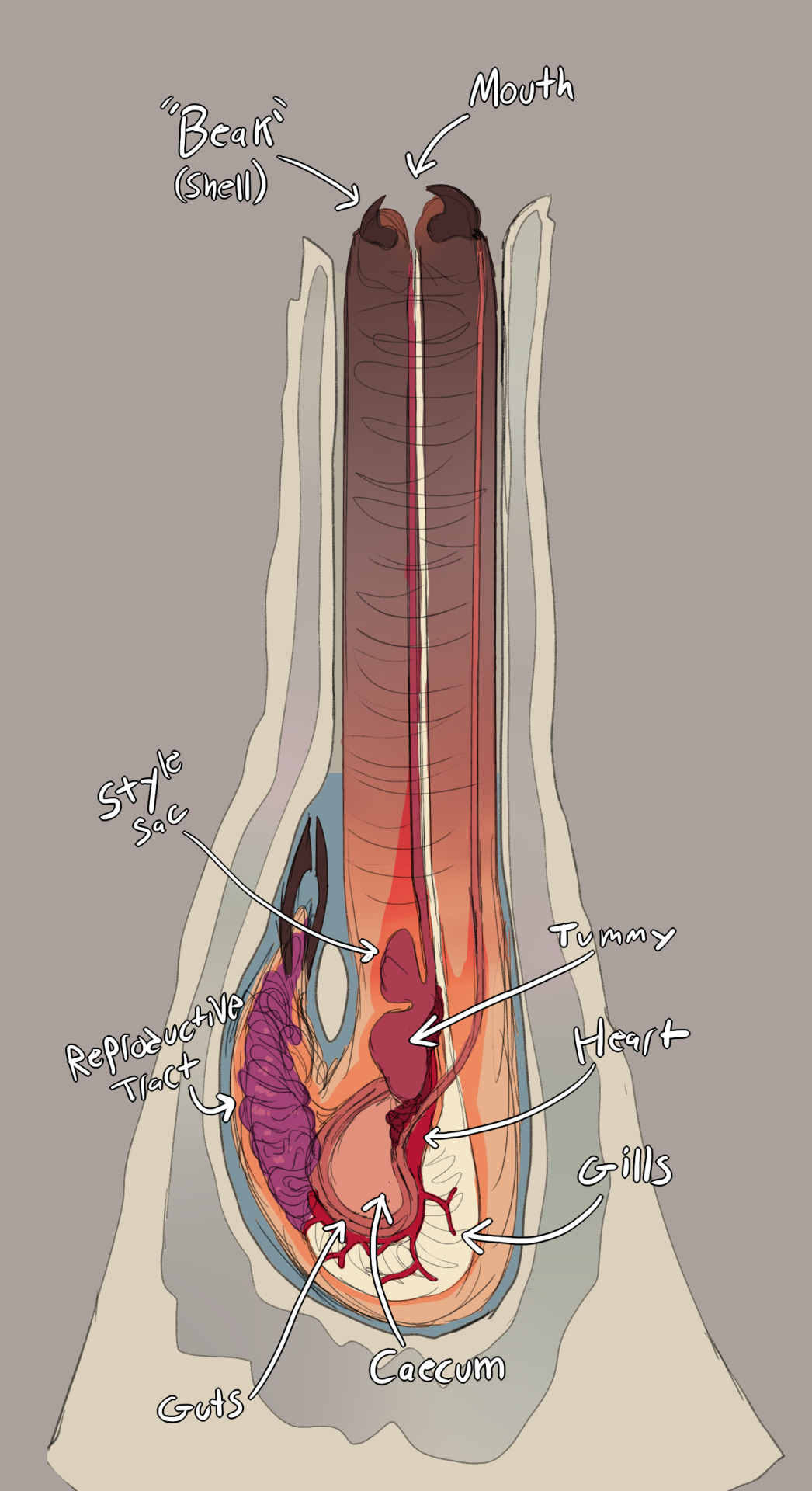
Want to get more into woodworms and how they work. So have a little anatomy diagram of a standard fella.
Firstly they are a big ass mollusk that lives on land, usually getting their start by burrowing into trees or dirt during their aquatic larval phase. Once in there they start building their tube and settling into their new sedentary life. This will be their home forever and they maintain it accordingly.
Diet varies from worm to worm, most are omnivorous and will eat whatever they can reach though. Some will have mutualistic relationships with the trees they infest or mimic flowers and fruit to lure prey. Others still have become infested themselves with algae and now rely more on photosynthesis. These guys are just weird, a very ancient group.
They also still rely on water to breathe, so they usually have their tube flooded up and circulated via muscular undulation. It’s a complex balance that leaves them very sensitive to pollutants.
Have more crazy ones I want to draw, but needed to get a basic body plan down. They get strange though.
#organs#anatomy diagram#gore#?#fantasy#speculative biology#speculative anatomy#mirum#art#worldbuilding#woodworms#no true north
90 notes
·
View notes
Text


[ID: Two images.
The first is an anatomy diagram for a circle, with the top of the diagram is titled, “Color coded your convenience, An Adult Flatland As Seen From the 3rd Dimension [Warning: Do not poke internal organs!]
This is followed by a flat color drawing of the Flatlander as seen from above, with the internal organs all marked with different colors, and labeled with text in the same color.
Going clockwise around the Flatlander, the labels are:
“Eyes: [Cannot see you unless you intersect Flatland in front of them]”. The eyes are very small and inside a short opening at the uppermost part of the circle.
“Brain” - A small pink blob along the top right inside of the Flatlander.
“Stomach” - a large green sack taking up most of the space in the middle right side of the body.
“Skin” - the dark grey outer layer that separates the Flatlander’s insides from the outside world. It is interspersed with short black lines.
"Womb” a large orange sack in the right corner of the body.
“Birth canal” - A very small interlocking section in the outer wall of
the Flatlander’s skin by the womb, currently closed.
Under the birth canal label is a tiny version of the larger line that is labeled “Newborns tend to be one-twelfth the size of their parent at birth”.
“Gonads: Sperm / Ova” - Two connected small sacs marked dark pink and gold in the lower point of the body.
“Kidney” - a dark red shape like a bean in the left corner of the body.
“Butt” - a short black line on the outer skin, connecting to the kidney.
“Blood” - The purple-red color filling in the background behind all the organs rather than being in veins.
“Nervous system” - Dark blue squiggly tubes branching across and around all the other organs in a random pattern.
“Proboscis / esophagus” - A tiny light blue tube reaching from the eye and down to the stomach.
"Lung" - A royal blue sack with a long tube at the top center.
An unlabeled red heart shape sits in the upper left corner of the body.
Below the Flatlander is black text that reads:
“[Warning: Do not reveal a Flatlander’s pregnancy status without permission!]
Under The Current Regime, it is illegal for any Flatlander other than a Straight Line to carry a pregnancy, and illegal for a line to impregnate anyone. Attempting to congratulate a Flatlander on their pregnancy could get them killed! Discretion is the better part of valor! Keep their secrets to yourself!”
The second picture shows the same character as the first, labled, "Anatomy of a Regular circle (true to color), with the rest of the labels removed, and the organs now in various shades of purple and pink.
End ID.]
Web archive link where you can download these, and the other Flatland art files.
Please consider donating to the Web Archive if you’ve got any spare change!
You can buy this design from Threadless here.
I'll make a masterpost of these diagrams when all the shapes I want to do are finished!
#long post#described images#pregnancy#anatomy#anatomy diagram#fake anatomy#ask to tag#Flatlander anatomy#Flatland#Rjalker reads Flatland a Romance of Many Dimensions#Flatland biology#Flatlander biology#IDK#Threadless merch#Flatland merch#Flatlanders#Rjalker does#Anatomy of a Regular Circle#Anatomy of a circle#Flatland Merch#Threadless designs#Flatlandanatomyposters2023#Flatlandanatomyposters
17 notes
·
View notes
Text

''Di͡e͡tskai͡a͡ ėnt͡s͡iklopedīi͡a͡'', 1913
Source
104 notes
·
View notes
Text

Illustration of Hansen’s disease, better known as #leprosy by @claire_carswell
It is caused by a long-term infection with mycobacterium leprae.
Hansen’s disease causes nerve damage, meaning that people experience repeated injury and infection to their extremities, leading to reabsorption - marked by shortening or loss - of their fingers and toes.
Hansen’s disease has a horrible history of stigmatisation, despite not being a very contagious disease, and is easily treated today. Unsurprisingly it is a #neglectedtropicaldisease - and predominantly impacts people in India, Brazil and Indonesia.
#medicine#anatomy#human anatomy#medical illustration#medical humanities#science#medical diagram#anatomy illustration#anatomical illustration#scientific illustration#medical history#human biology#biology#anatomical diagram#medical art#pathology#anatomy diagram
92 notes
·
View notes
Photo

Flower anatomy up close and personal!
(Source: Danilo Zavatin’s Instagram page)
#botany#botanical#botanical illustration#plants#tropical#tropical plants#nature#science#biology#plant anatomy#pink#yellow#green#scientific diagram#flowers#flower#tropical flowers#stamen#pistil#petals#anther#exotic flowers
301 notes
·
View notes
Photo

weapon
#get off the floor and make me a sandwich#honkai star rail#blade#ren#mihoyo this is the 2nd time you've shown war hardened edgelord to the class#fr the venn diagram for xiao mains and blade mains gon be a circle#you can see my will to color slowly leave my body as you move left to right#anatomy is fucked i just wanted to draw hot eyes#balde protection services#procrastination doodles
263 notes
·
View notes